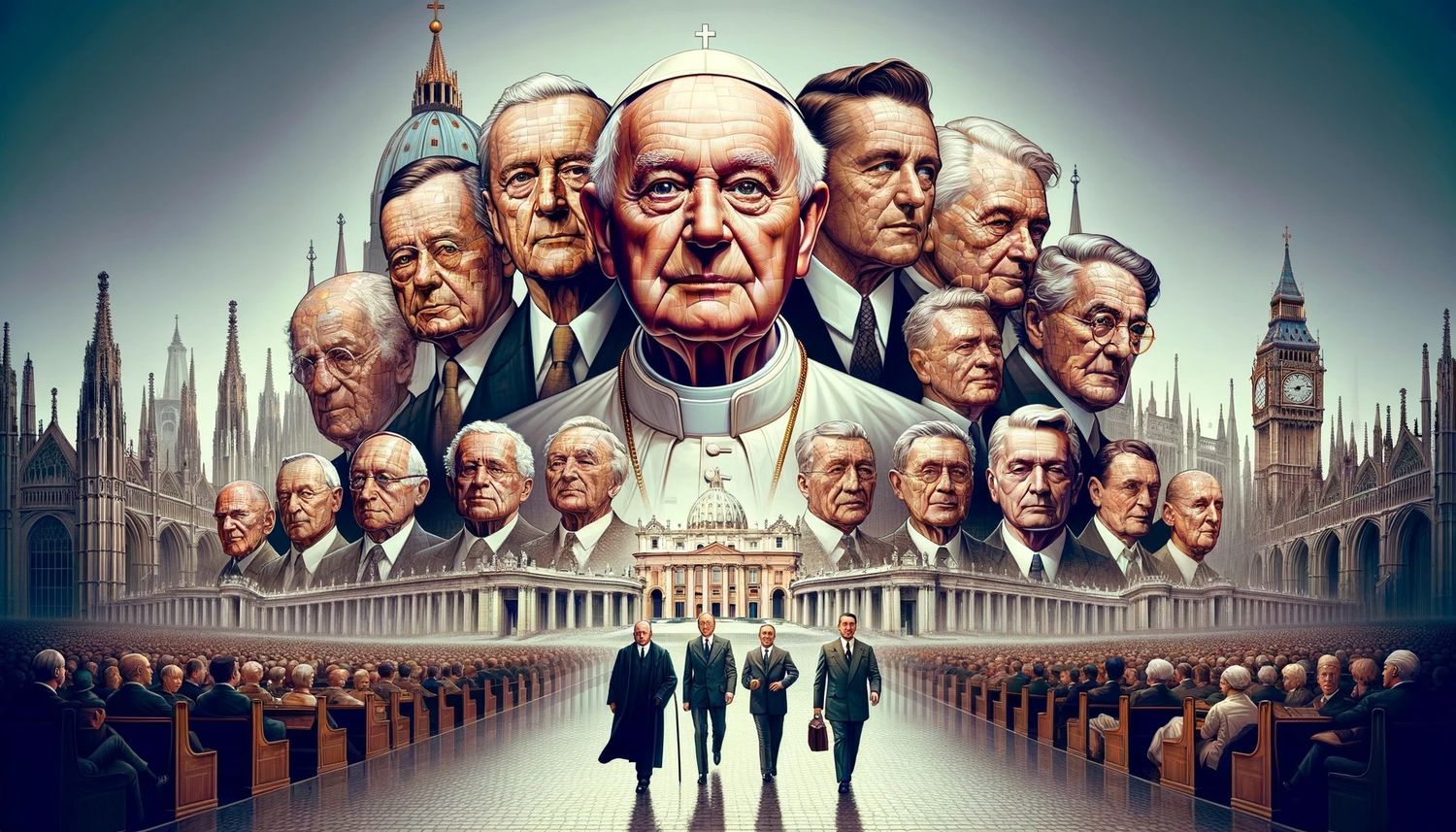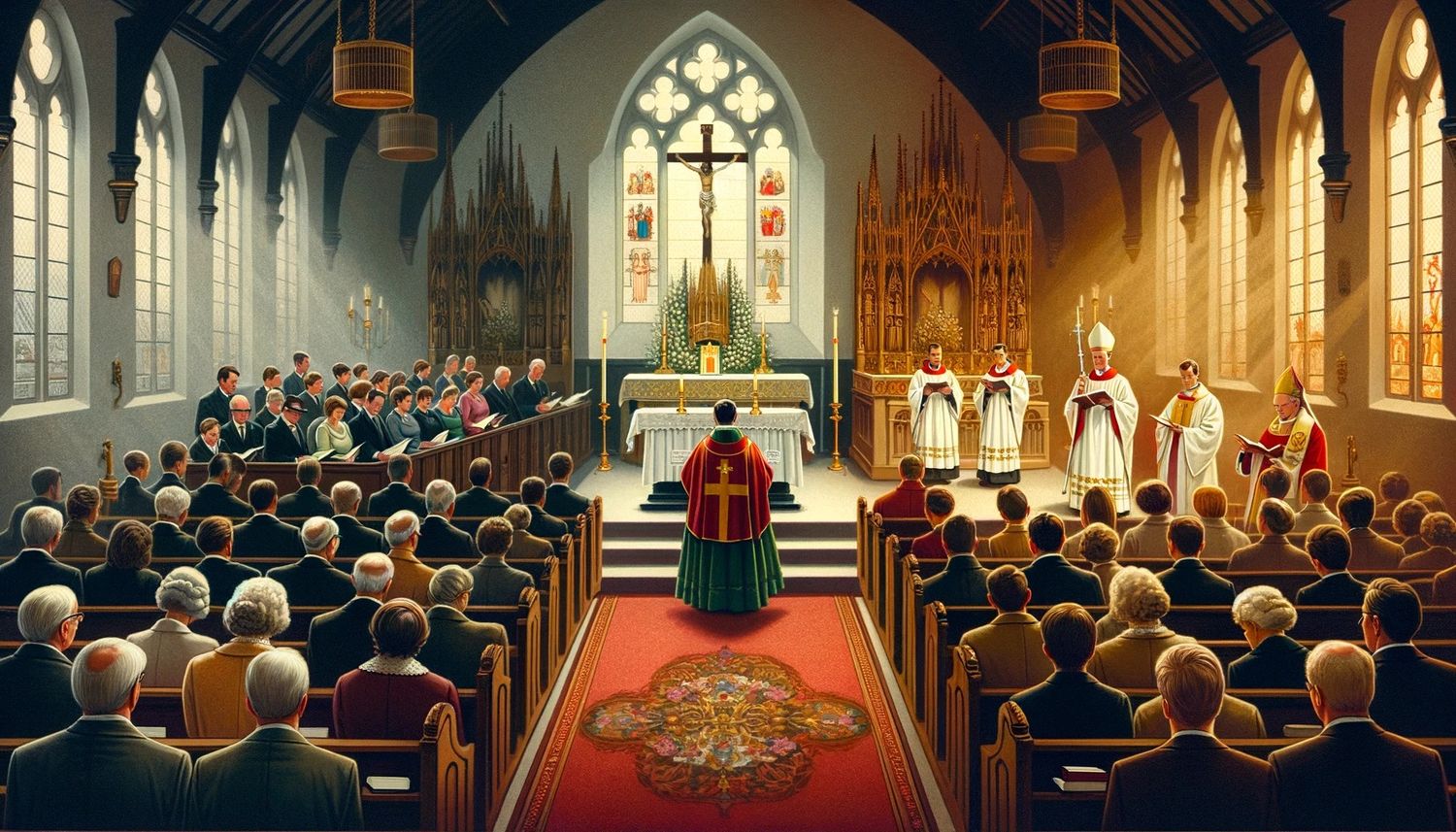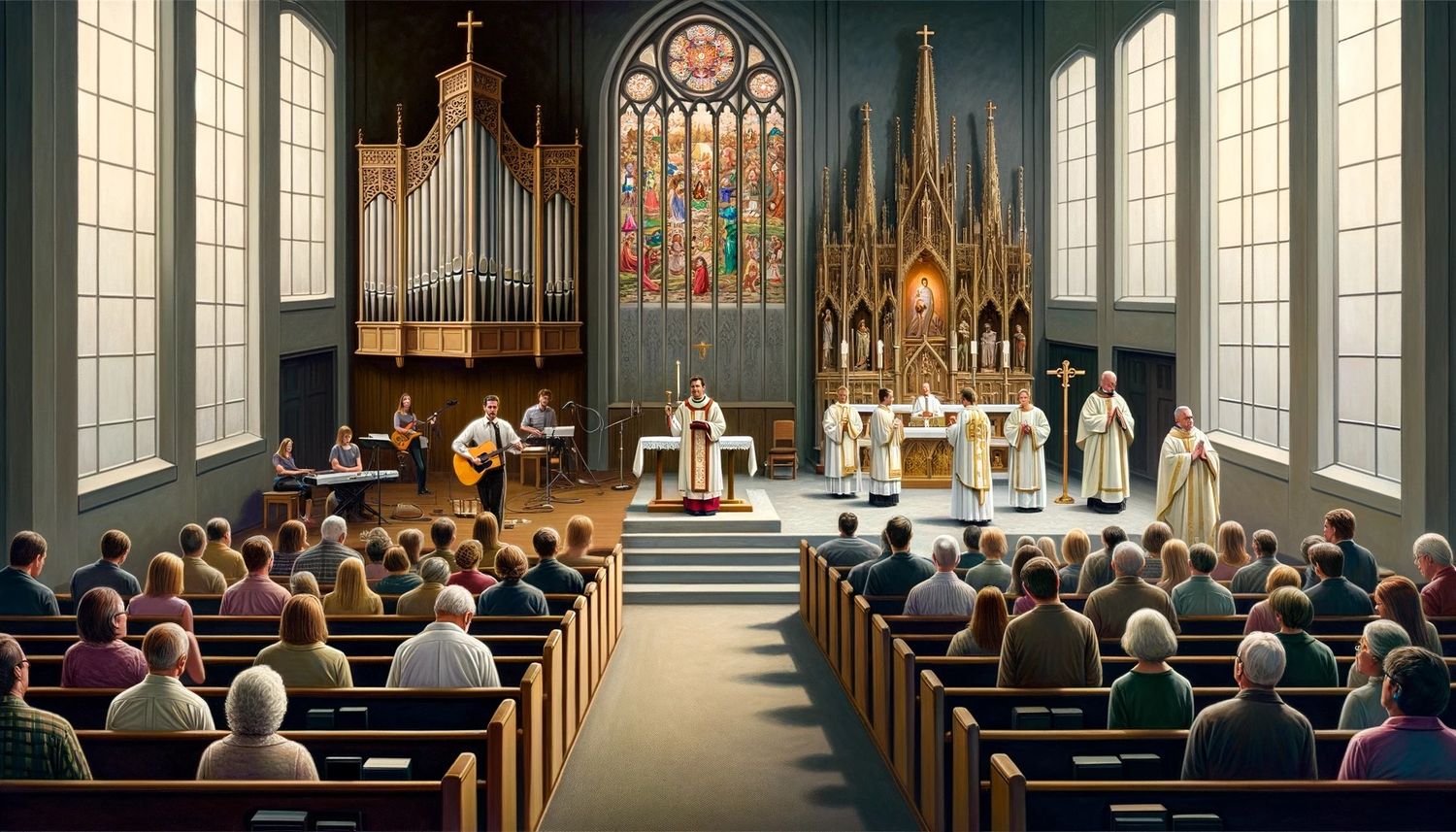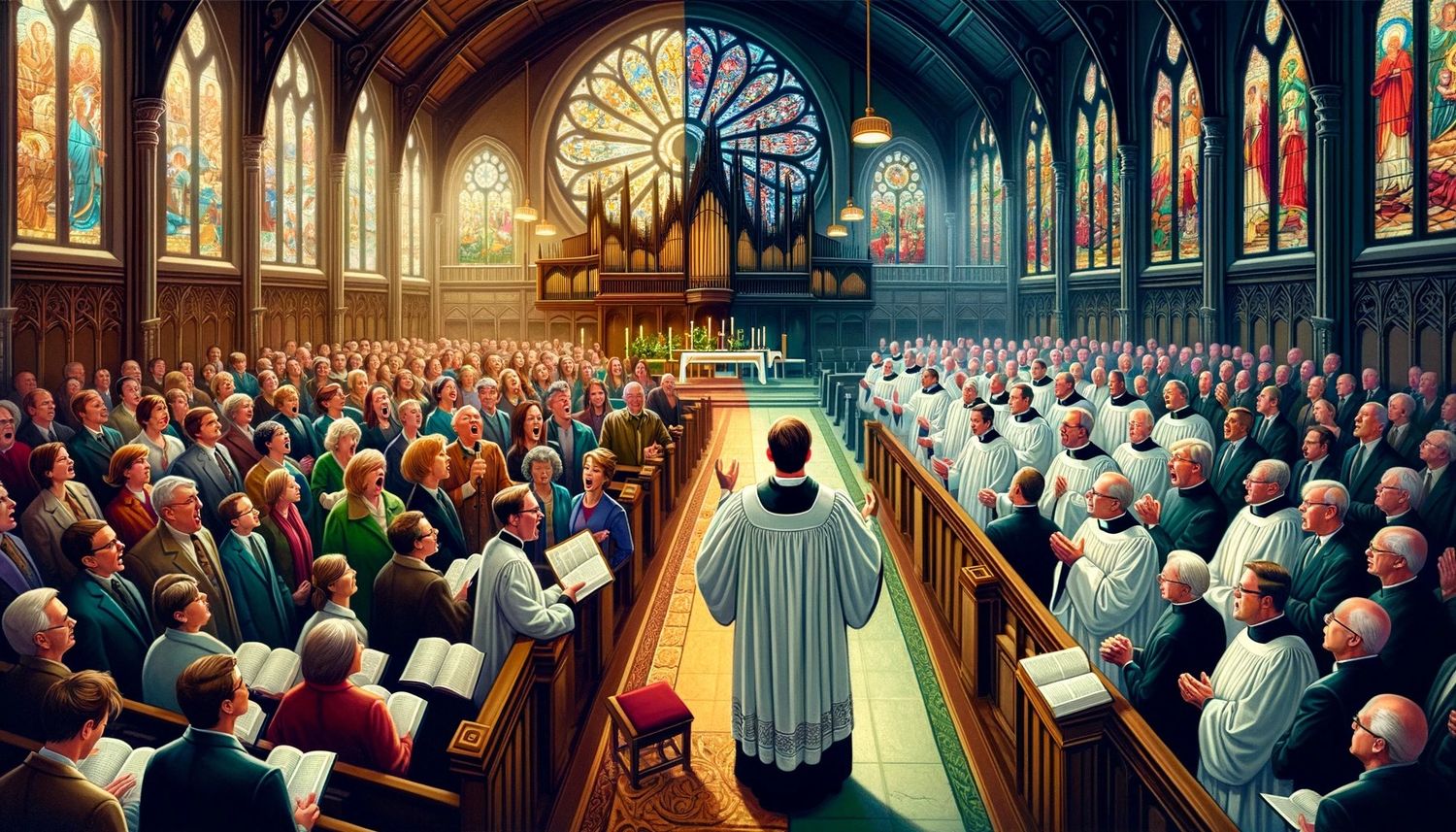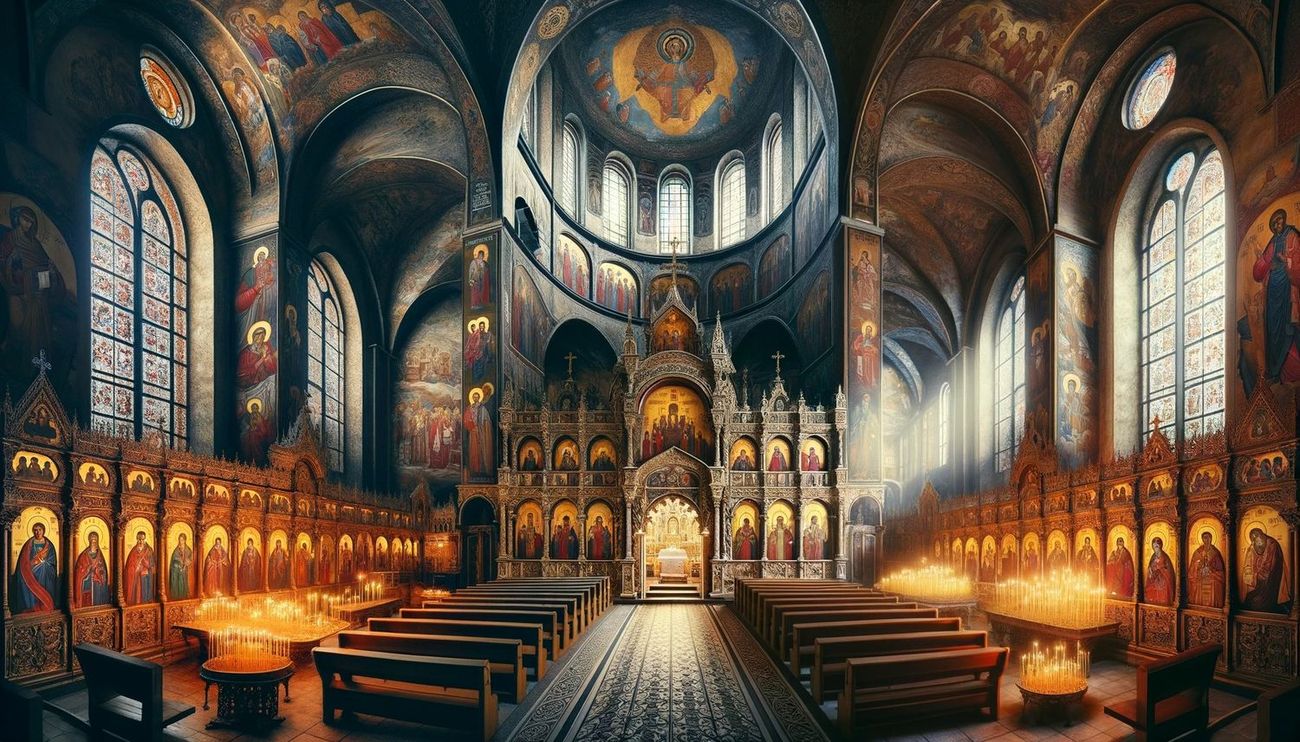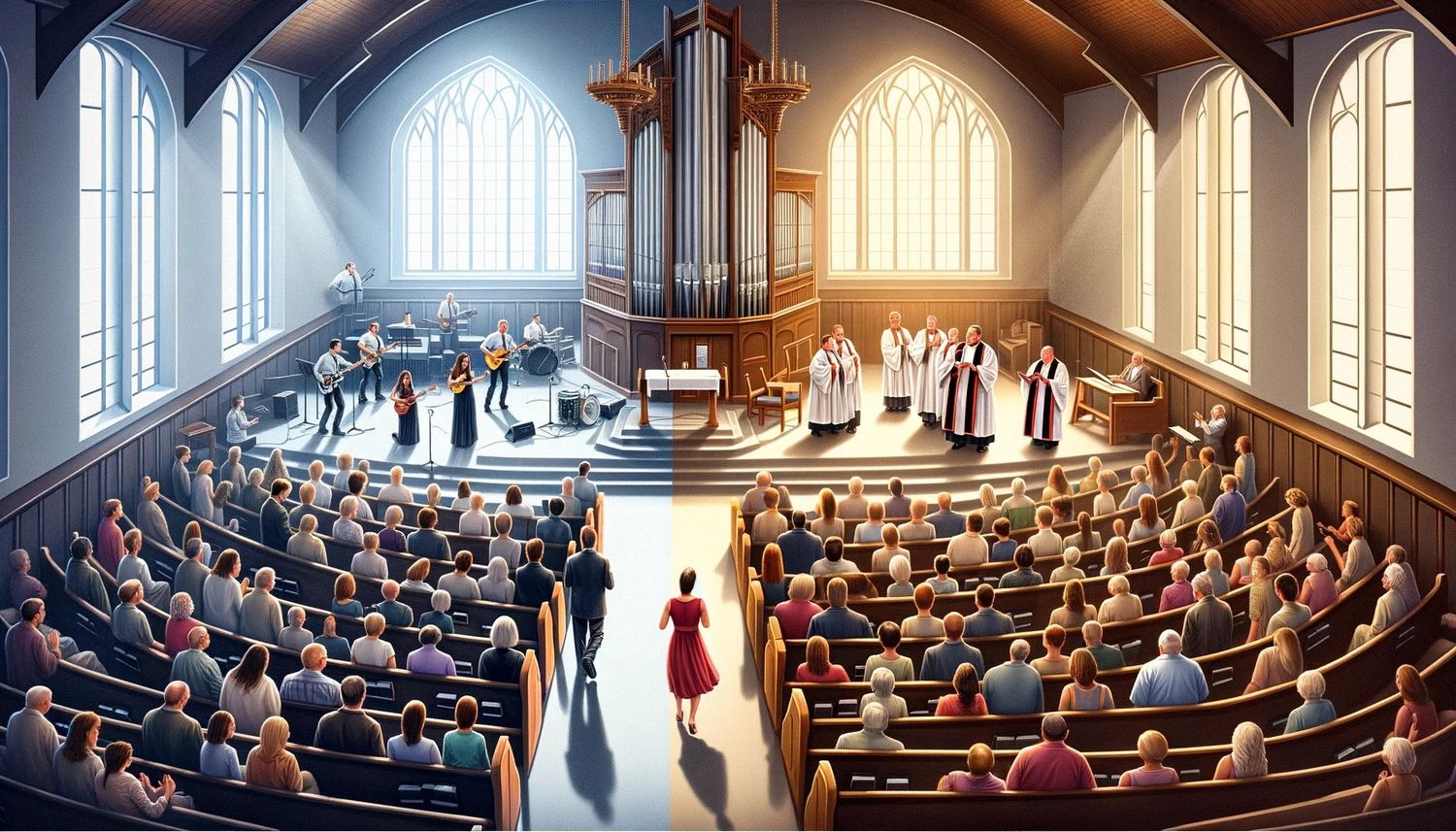Home>Theology and Spirituality>How Does Lutheran Differ From Catholicism
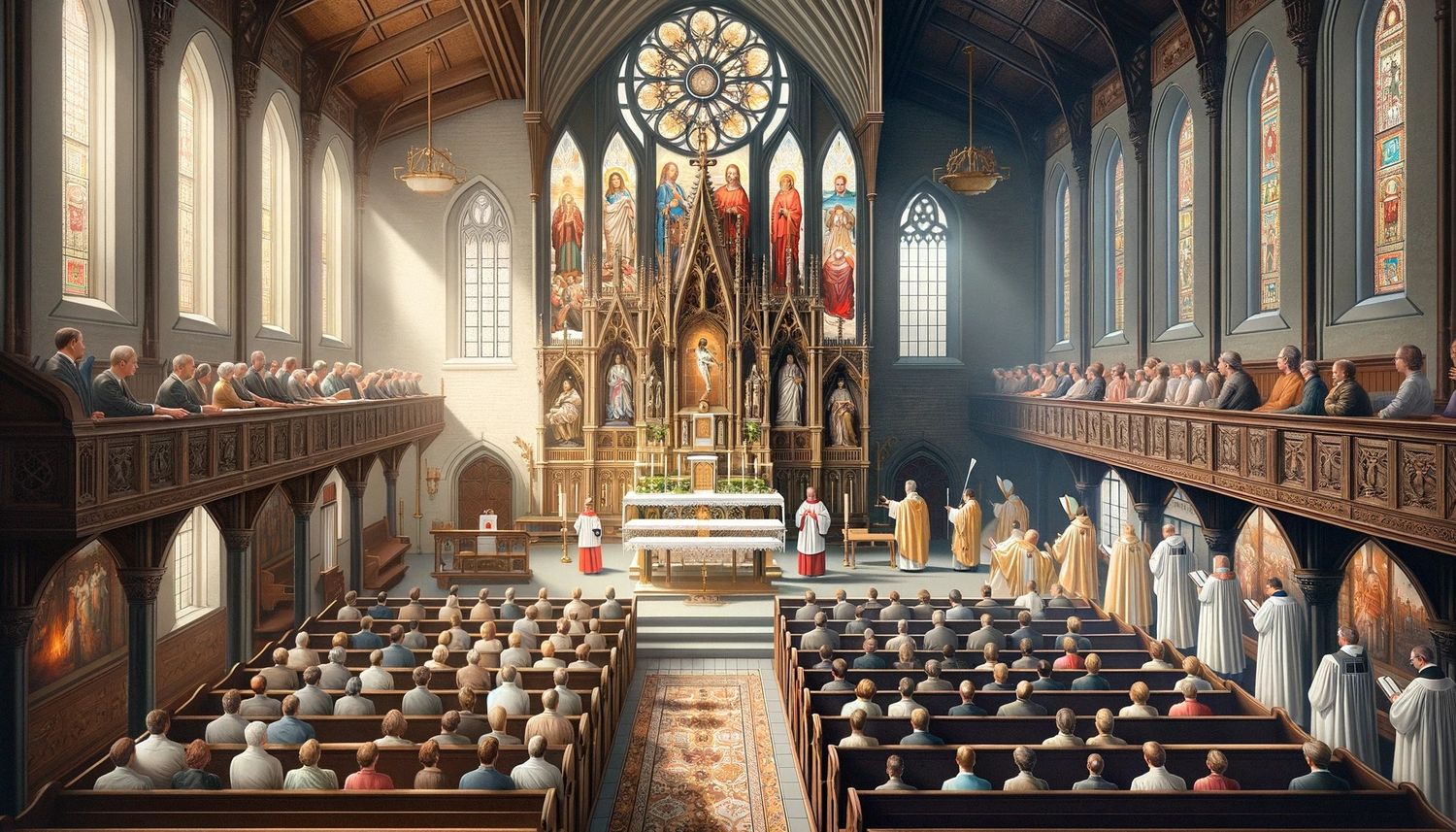

Theology and Spirituality
How Does Lutheran Differ From Catholicism
Published: March 3, 2024
Jason DeRose, Managing Editor at Christian.net, uses his expertise in religion and journalism to deepen understanding of faith's societal impacts. His editorial leadership, coupled with a strong academic background, enriches the platform’s diverse content, earning him recognition in both journalism and religious circles.
Discover the key differences between Lutheran and Catholic theology and spirituality. Explore the distinct beliefs and practices that set these two faiths apart.
(Many of the links in this article redirect to a specific reviewed product. Your purchase of these products through affiliate links helps to generate commission for Christian.net, at no extra cost. Learn more)
Table of Contents
Key Differences Between Lutheran and Catholic Beliefs
-
Authority of Scripture: One of the fundamental differences between Lutheran and Catholic beliefs lies in their view of the authority of scripture. Lutherans adhere to the principle of sola scriptura, which emphasizes the Bible as the ultimate authority in matters of faith and doctrine. On the other hand, Catholicism recognizes the authority of both the Bible and sacred tradition, as interpreted by the Magisterium of the Church.
-
Justification and Salvation: Another significant difference is found in their understanding of justification and salvation. Lutherans believe in the concept of sola fide, or "faith alone," as the means of justification and salvation. In contrast, Catholic doctrine teaches that while faith is essential, it must be accompanied by good works for salvation.
-
The Sacraments: The two traditions also diverge in their beliefs about the sacraments. Lutherans recognize two sacraments, Baptism and the Eucharist, as instituted by Christ. Catholicism, on the other hand, acknowledges seven sacraments, including Baptism, Eucharist, Confirmation, Reconciliation, Anointing of the Sick, Holy Orders, and Matrimony.
-
The Role of Mary and the Saints: The veneration of Mary and the saints is another area of difference. While Lutherans hold Mary and the saints in high regard and may commemorate them, they do not advocate for their intercession in the same way as Catholicism, which includes prayers to Mary and the saints for their intercession before God.
-
Papal Authority: The concept of papal authority is a key point of divergence between Lutheran and Catholic beliefs. Lutherans do not recognize the authority of the Pope as the head of the Church on earth, while Catholics view the Pope as the successor of St. Peter and the Vicar of Christ with supreme authority over the Church.
Understanding these key differences is essential for appreciating the distinct theological perspectives and practices of Lutheran and Catholic traditions.
Historical Background of Lutheran and Catholic Churches
The historical roots of the Lutheran and Catholic churches trace back to the period of the Protestant Reformation in the 16th century. The Catholic Church, with its origins in the early Christian community, developed into a dominant religious and political institution in medieval Europe. However, by the 16th century, the Church had become entangled in various controversies and practices that led to widespread discontent among certain theologians and reformers.
In 1517, Martin Luther, a German monk and theologian, initiated the Reformation by posting his Ninety-Five Theses on the door of the Castle Church in Wittenberg. This act symbolized the beginning of the Protestant Reformation and marked the divergence of Lutheranism from the Catholic Church. Luther's theological objections centered on issues such as the sale of indulgences, the authority of the Pope, and the nature of salvation, sparking a movement that sought to reform the existing practices and doctrines of the Catholic Church.
As the Reformation gained momentum, Luther and his followers, known as Lutherans, emphasized the primacy of scripture, the priesthood of all believers, and the doctrine of justification by faith alone. The Lutheran movement spread throughout Europe, finding support among various rulers and leading to the establishment of independent Lutheran churches.
In contrast, the Catholic Church responded to the challenges posed by the Reformation through the Council of Trent (1545-1563), which addressed doctrinal issues, reaffirmed traditional teachings, and initiated reforms within the Church. This period, known as the Counter-Reformation, sought to address the concerns raised by the Protestant reformers while strengthening the internal unity and authority of the Catholic Church.
The historical background of the Lutheran and Catholic churches reflects a pivotal moment in Christian history, marked by theological, ecclesiastical, and cultural transformations that continue to shape the religious landscape to this day. Understanding the historical context of these traditions provides valuable insights into their distinct theological perspectives and practices.
Theological Variances Between Lutheran and Catholic Doctrine
-
Sola Scriptura vs. Sacred Tradition: Lutherans adhere to the principle of sola scriptura, emphasizing the Bible as the ultimate authority in matters of faith and doctrine. In contrast, Catholicism recognizes the authority of both the Bible and sacred tradition, as interpreted by the Magisterium of the Church.
-
Justification and Salvation: Lutherans believe in the concept of sola fide, or "faith alone," as the means of justification and salvation. Catholic doctrine, on the other hand, teaches that while faith is essential, it must be accompanied by good works for salvation.
-
The Sacraments: The two traditions diverge in their beliefs about the sacraments. Lutherans recognize two sacraments, Baptism and the Eucharist, as instituted by Christ. Catholicism, on the other hand, acknowledges seven sacraments, including Baptism, Eucharist, Confirmation, Reconciliation, Anointing of the Sick, Holy Orders, and Matrimony.
-
The Role of Mary and the Saints: While Lutherans hold Mary and the saints in high regard and may commemorate them, they do not advocate for their intercession in the same way as Catholicism, which includes prayers to Mary and the saints for their intercession before God.
-
Papal Authority: Lutherans do not recognize the authority of the Pope as the head of the Church on earth, while Catholics view the Pope as the successor of St. Peter and the Vicar of Christ with supreme authority over the Church.
Understanding these theological variances is crucial for appreciating the distinct perspectives and practices of Lutheran and Catholic traditions.
Worship Practices in Lutheran and Catholic Churches
Lutheran Worship Practices
- Liturgical Worship: Lutherans often engage in liturgical worship, following a structured order of service that includes prayers, hymns, readings from the Bible, and the celebration of the Eucharist.
- Emphasis on Preaching: Sermons hold significant importance in Lutheran worship, with a focus on delivering the message of God's Word and its relevance to the lives of the congregation.
- Sacramental Observance: Lutherans observe the sacraments of Baptism and the Eucharist, considering them as means of grace and essential components of their worship practices.
- Music and Hymnody: Music plays a central role in Lutheran worship, with congregational singing of hymns and the use of organ and choir to enhance the spiritual atmosphere.
Read more: How Does Lutheran Differ From Christianity
Catholic Worship Practices
- Liturgy and Mass: Catholic worship centers around the celebration of the Mass, which follows a prescribed liturgical format and includes readings from the Scriptures, prayers, and the Eucharistic celebration.
- Sacramental Emphasis: Catholic worship places a strong emphasis on the sacraments, including the celebration of the Eucharist, Baptism, Confirmation, Reconciliation, Anointing of the Sick, Holy Orders, and Matrimony.
- Veneration of Mary and the Saints: Catholic worship often includes veneration of Mary and the saints, with prayers and devotions offered to them for their intercession before God.
- Incorporation of Sacred Art and Rituals: Catholic worship incorporates sacred art, symbols, and rituals, creating a visually rich and symbolic environment that enhances the spiritual experience of the faithful.
Both Lutheran and Catholic worship practices reflect their distinct theological emphases and historical developments, providing unique expressions of faith and devotion within their respective traditions. Understanding these worship practices is essential for gaining insights into the spiritual life and communal worship of Lutheran and Catholic congregations.
Leadership Structure and Authority in Lutheran and Catholic Churches
Lutheran Leadership Structure and Authority
-
Congregational Autonomy: In the Lutheran tradition, each congregation has a significant degree of autonomy in its governance and decision-making processes. This means that individual congregations have the authority to call and dismiss their own pastors, manage their finances, and oversee their internal affairs.
-
Role of Pastors: Lutheran churches typically follow a congregational leadership model, where pastors hold significant authority within their respective congregations. While they may receive guidance from regional or national synods, the pastors have considerable autonomy in leading worship, providing pastoral care, and administering the sacraments.
-
Synodical Structure: Lutherans often organize themselves into synods, which are regional or national bodies that provide support, resources, and oversight to member congregations. These synods may offer guidance on theological matters, ordain clergy, and facilitate collaborative efforts among congregations.
-
Bishops and Presiding Officers: Some Lutheran denominations have bishops or presiding officers who serve in leadership roles within their respective synods. However, their authority is typically more consultative and collaborative, as opposed to the centralized hierarchical structure found in Catholicism.
Catholic Leadership Structure and Authority
-
Papal Primacy: At the apex of the Catholic Church's leadership structure is the Pope, who is regarded as the successor of St. Peter and the Vicar of Christ on earth. The Pope holds supreme authority over the entire Catholic Church and is responsible for defining and safeguarding the teachings of the faith.
-
Episcopal Hierarchy: The Catholic Church operates under a hierarchical structure, with bishops serving as the primary leaders within their dioceses. Bishops are responsible for overseeing the spiritual and administrative affairs of their respective regions, including the ordination of priests and the establishment of pastoral policies.
-
College of Cardinals: The College of Cardinals, appointed by the Pope, plays a crucial role in the governance of the Church, particularly in the selection of a new Pope upon the vacancy of the papal office.
-
Parish Priests and Religious Orders: Within the local context, Catholic parishes are led by priests who administer the sacraments, provide spiritual guidance, and oversee the pastoral care of their congregations. Additionally, various religious orders and congregations contribute to the leadership and ministry within the Catholic Church, serving in diverse roles such as education, healthcare, and social services.
The distinct leadership structures and authority dynamics in Lutheran and Catholic churches reflect their theological emphases, historical developments, and ecclesiastical governance. Understanding these differences provides valuable insights into the organizational frameworks and decision-making processes within these two Christian traditions.

